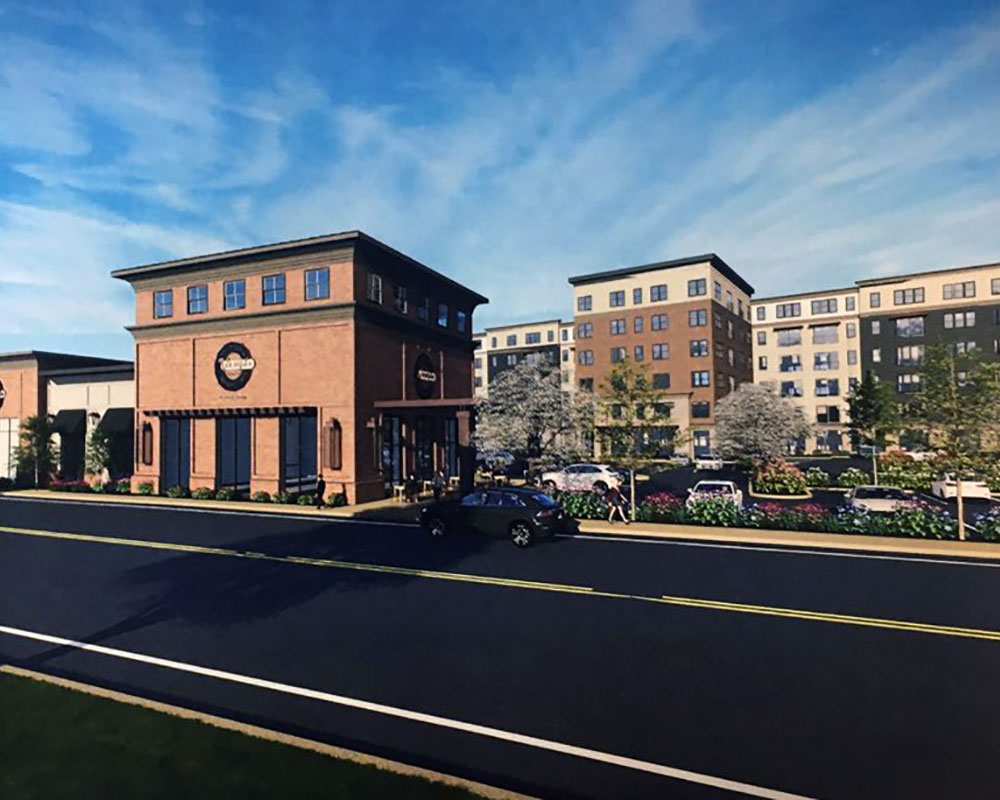Following pleas from such diverse interests as Haverhill firefighters and a downtown developer, the Haverhill City Council gave its approval Tuesday night to a village center-styled housing and retail development in the Ward Hill area of the city.
“Oxford Crossing,” a plan by Tuscan Village developer Joseph Faro and his sister Deanna Gaiero, owner of Joseph’s Trattoria restaurant, also came with an unusual pledge to help pay salaries to increase the number of firefighters on trucks. Second generation business owner Gaiero presented the vision for the development.
“We’re redeveloping our dilapidated old factory building into Oxford Crossing Village Center. This will be a unique, walkable gathering place with a fun social environment, consisting of our new restaurant and an outdoor patio, a bakery and gourmet market, two boutique retail spaces and 230 residential units,” she said.
Plans originally called for 270 units, but were reduced to avoid any wetlands conflicts. The housing is to be built within a six-story residential building. There will also be 3,000 square feet of retail, a 1,200 square-foot-bakery and a 200-seat restaurant.
One area of concern about the location has long been the issue of traffic congestion and speeding along the stretch of Route 125 between Ward Hill and North Andover. Rick Friberg, the project’s engineer said traffic was the first issue the team addressed. To do so, he said, they needed a plan to slow traffic with the installation of a traffic light.
“What we did on this plan was we’re able to solve for the traffic issues, we proposed a traffic signal at the driveway,” he explained.
He said there will also be changes to traffic turning patterns which should provide for greater safety.
Joseph Faro told councilors, in addition to providing much-needed housing and safer roadways, the project also means considerably more tax income.
“Today, my family pays $41,000 a year in property taxes. Fully developed, the property taxes on this property will be just south of a million dollars, so that’s 25 times the benefit to the city of Haverhill,” he said.
Faro said he and fellow Haverhill developer Salvatore N. Lupoli both agreed to donate an additional $160,000 to the Haverhill Fire Department to help offset the cost of extra personnel.
Changes to Oxford Avenue, itself, described in plans as a discontinuance actually amount to a realignment.
There were many voices of support for the project, including former Haverhill City Councilor Mary Ellen Daly O’Brien and Haverhill Fire Chief Robert M. O’Brien. A number of neighbors who have consistently opposed other projects, including an adult-use cannabis shop, along the busy stretch said the project is simply too big for that area.
Among opponents were Alison Colby-Campbell and her husband, Jonathan Campbell, and farmer C. Michael Davidowicz. They expressed concern about the effect on water pressure by adding that many housing units to the neighborhood.
Before giving the project the green light, councilors attached a list of conditions addressing traffic and infrastructure.
Councilor Thomas J. Sullivan urged the developer to set aside more than a planned eight units as reduced-price housing, but was told such a condition would harm the viability of the project.
Ultimately, the Council voted 8-0 in favor of the plan with Councilor Catherine P. Rogers abstaining and leaving the room because a relative is a nearby property owner.

